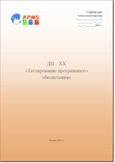Rational Rose is a CASE tool for designing and developing information systems and software for enterprise management. It can be used for analysis and modeling of business processes like other CASE tools (ARIS, BPwin, ERwin). The first version of this product was released by Rational Software. Rational Rose was bought by IBM further.
Rational Rose
The fundamental difference between Rational Rose and other tools is the object-oriented approach. Graphical models created by using this tool are based on object-oriented principles and the Unified Modeling Language (UML). Rational Rose modeling tools allow developers to create a comprehensive architecture of enterprise processes. It allows you to preserve all the relationships and control actions between different levels of the hierarchy.
Business process modeling in Rational Rose is performed by applying various aspects. Each of these aspects focuses on certain characteristics and capabilities of the processes.
Such aspects include:
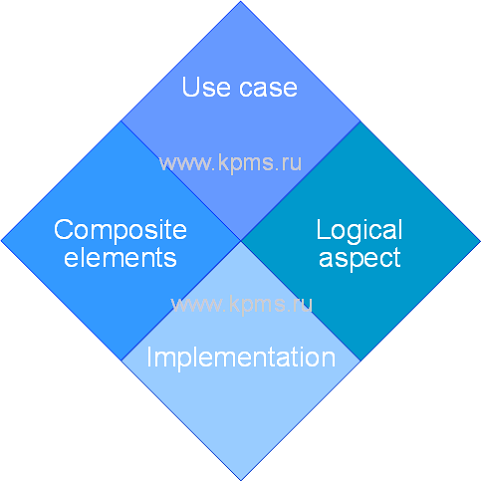
- use case. This aspect makes it possible to understand how the participants act in the process and thereby determine their interaction and influence on the process. Use-case diagrams, sequence diagrams, collaboration diagrams and action diagrams are used in order to create process models within this aspect;
- logical aspect. You can define the functional requirements of processes within this aspect. It defines a logical relationship between classes of process elements. Class diagrams and state diagrams are used to create models;
- composite elements. This aspect pays attention to the composition of the process elements and their distribution when creating an information system. Models in this aspect are created using a component diagram. It contains information about process elements and software;
- implementation. This aspect shows the scheme of the process in relation to the hardware of the information system. Only one diagram is used to build models – the topology diagram.
Rational Rose provides users (business analysts, engineers, technical specialists and managers) with the ability to create, analyze, modify and manage models using a single object-oriented approach and a single modeling language.
Rational Rose capabilities
The latest versions of Rational Rose contain several software products that provide extensive business process modeling capabilities. Users can create graphical process models that are approaches to business needs.
Rational Rose provides the following business process modeling capabilities:
- object modeling support. The application of the object modeling principles and the UML language allows you to bring process models closer to business requirements and simplifies the appearance of models;
- structural representation of elements. Process models and their elements can be presented in the form of a graphical structure that clearly displays their composition and relationships;
- models integration. Rational Rose allows you to combine business process models, application models and data models by using a single UML language;
- integration with software products. Rational Rose has implemented the possibility of integration with other software products, for example, Microsoft Visual Studio, in order to expand the possibilities of modeling and analyzing business processes;
- open architecture. It allows you to supplement the existing tools of the program with new functions and features;
- reverse engineering. This feature allows you to create a conceptual model based on the existing program code. This feature can be useful for the purposes of modeling business processes if the simulated process is automated.
Rational Rose advantages
The main advantage of this CASE tool is related to the object modeling principle. It is possible to bring the views of various specialists who carry out business process modeling and work with models as close as possible due to its application. In addition, there are advantages due to the convenience of working with the Rational Rose software package.
The advantages of Rational Rose are:
- teamwork support. This CASE tool provides simple support for all project participants. Users can work with their own unique models and in their own environment without changing the workplace, while the relationship with common models is maintained;
- model management. All created models can be easily changed. Changes in one model are automatically reflected in interconnected models. A version control and configuration management system is used to manage models. It allows you easy to make changes in any business process models;
- error control. Rational Rose provides errors tracking that occur during modeling. This allows you to correct errors taking into account their inheritance and transfer to the next level of modeling;
- documenting models. Users can create the necessary reports and documents for process models. Documents are formed according to the user needs and can be configured for application to different models;
- configuration management. Users can customize the interface configuration and parts of the applications to suit their needs. Rational Rose uses a graphical user interface (GUI), so you can configure the necessary environment for comfortable work.
Books on Rational Rose
Rational Rose remains a fairly popular CASE modeling tool for business processes. Quite a lot of literature and educational materials have been written on this software package. This section presents the most popular and interesting books for the Rational Rose use.
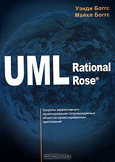
UML and Rational Rose
Rational Rose is one of the popular visual modeling tools. This book describes in detail how to work with the Rational Rose package, explains how to model business processes using UML diagrams and object-oriented applications. The book explains how you can translate process diagrams into program code using Rational Rose.
UML and Rational Rose explains the following issues: the basic concepts and principles of the UML language, the creation of UML diagrams, the development of detailed object models, the development of detailed data models, modeling based on the use of XML DTDs, automatic code generation, reverse modeling, the use of forward and reverse modeling techniques.
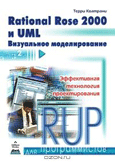
Rational Rose 2000 and UML. Visual modeling.
This book describes the UML modeling language with its standard notations and semantics for describing the structure of objects and their behavior. The use of the UML language is demonstrated on the basis of the Rational Rose 2000 modeling package.
The book explains each element of the UML language and the use of RUP modeling technology. The entire development cycle is analyzed in order to demonstrate the capabilities of RUP and UML, from creating an idea to conducting analysis and design. The whole process is analyzed using specific examples in the Rational Rose 2000 package.
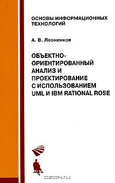
Object-oriented analysis and design using UML and IBM Rational Rose
This book is devoted to the study of the UML language of version 1.5 based on the use of the Rational Rose package, which was developed by IBM. The book describes all the elements of the language, provides examples of process modeling, specifies the features of the object-oriented analysis process, presents the process of designing and developing processes using the IBM Rational Rose package.
The book will be useful for beginners and fairly experienced business analysts, process modeling specialists and anyone interested in object-oriented modeling.
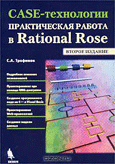
CASE technologies. Practical work in Rational Rose
The book was published in 2002. This book describes in detail the process of creating a software system from the idea to the implementation of the program code. All the steps of the work are presented with an explanation of the application of Rational Rose. There are presented the possibilities of this tool, its functions and the tasks to be solved.
The book discusses the creation of a greenhouse management system as an example of implementation. The necessary models have been created based on the UML language, the possibilities of creating web applications and databases are described in detail.
This book will be useful for systems and business analysts involved in process modeling and the creation of information systems.
